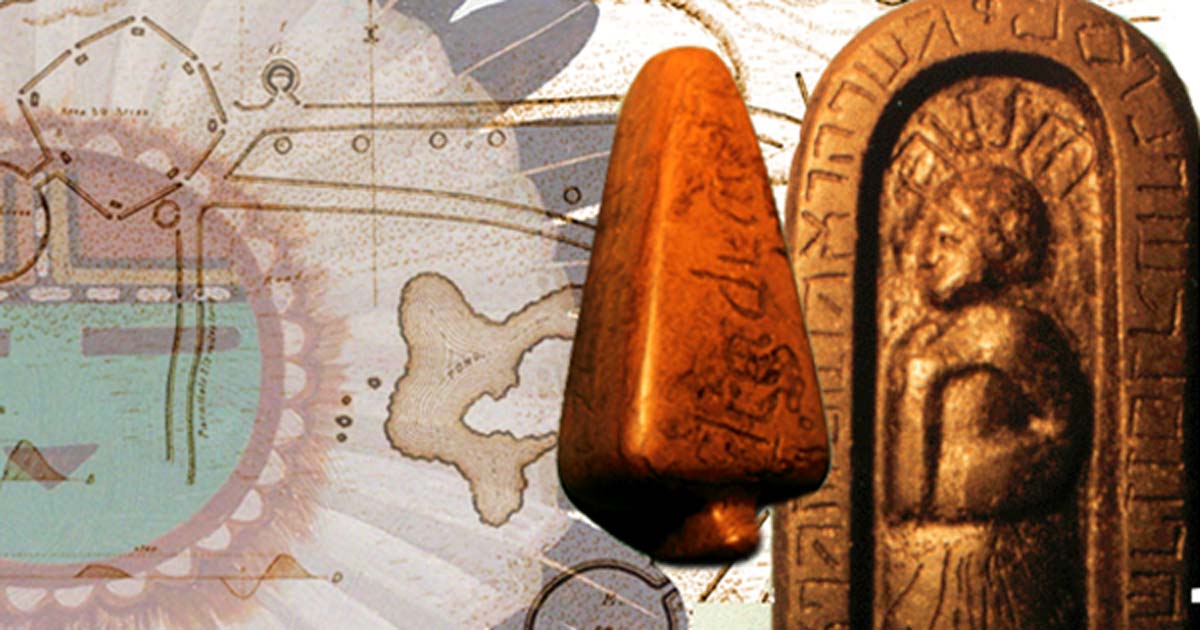
First, there is a lot of rubbish interpelated into this work. What was discovered was important. It also conforms with a body of archeolgical evidence for the OHIO valley circa 700 BC through 500 AD that is clearly Hebraic. Ignoring it does not change that and it has been associated with the Hopewell culture.
With a known Hebraic culture in the Archeological record, it is completely plausible that an oral tradition was then handed down through the nineteenth century. This certainly inspired the emergence of Mormonism. The metal book technolgy was common during the Bronze Age just prior to this culture been extablished so we have provenance.
Recent work on the historicity of the Book of Mormon has successfuly placed it all within the old Northwest. What the Book of Mormon does do is draw our attention to the Ohio Valley. Proving historic validity itself will remain impossible and the content can be described as channeled at the least. Validity comes only from archeology and we have been getting just that.
Hebrew traditions were been upheld here and this looks to be the top of a staff held by a priest. Prettty convincing actually.
What needs to be understood is that contact with the levant was likely sustained until the fall of Jeruselum by the Romans. The sea route to Gibralter was always open and the great circle fleet however reduced in size sailed every year as well. This meant access to the brass mines in Georgia in particular and perhaps other access points such as the hudson and even the St Lawrence. It is then no trick to walk to the Ohio valley and establish a series of settlements there. It is a case of heading west a fairly short distance and then going north to skirt the worst of the mountains.
Did David Wyrick Find the Ark of the Covenant and the Holy Grail Near Newark, Ohio?
8 JUNE,2017
For 157 years, archaeologists, religious scholars, anthropologist, politicians, scientists, and historians—everyone except Native Americans—have tried to prove that the two stones and one small cup David Wyrick found in a burial mound in Ohio, were forgeries.
If the stones were authentic, then our theories about the peopling of the world and manifest destiny were all wrong. So, there was, and still is, a lot at stake.
Finding the Keystone
Wyrick was a printer/surveyor by trade living in Newark, Ohio, USA in the mid-1800s. Whenever time provided, he and his son would travel the mile or so southwest of town to the ancient mounds and dig in the burial grounds for native artifacts. One June day they came across a wedge-shaped stone in a circular depression, common in the ancient earthworks. It was six inches (15 cm) long, three inches (7.6 cm) in its widest part, and half an inch (1.2 cm) in diameter, and tapered to a point.
What was strange about this stone was that it had Hebrew inscriptions on all four sides; Melech Eretz - King Of The Earth; Toras Hashem - The Law Of The Lord; D’var Hashem - The Word Of The Lord; and Kodesh Kodashim - Holy Of Holies. They named it the Keystone because of its unique shape.
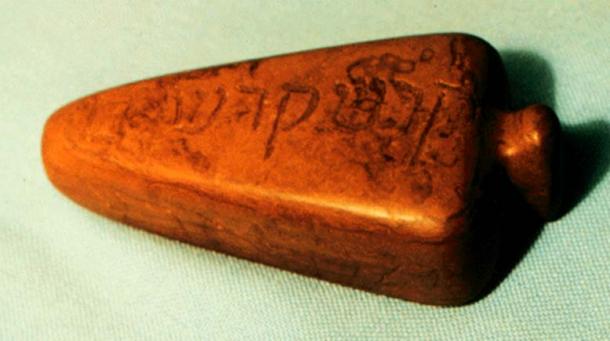

A picture of "The Keystone", one of several artifacts associated with the Newark Holy Stones. (J. Huston McCulloch / Public Domain )
No record was kept of the exact location it was found, what direction it was pointing, or if it was found in a tomb. The study of archaeology at this point in time was in its infancy and very few treasure hunters were keeping detailed records of their discoveries.
Rod or Staff of God?
The stone resembles a spearhead, or the tip of a rod or staff, in my mind. Moses and his brother Aaron both had staffs throughout their most important milestones. The staff was called the Rod or Staff of God in Moses’ case and Aaron’s Rod for Moses’ brothers. It is written in Hebrew 9:4 that Aaron’s Rod was kept in the Ark of the Covenant. I do not know if there is any written record of inscriptions on either staff, but if they did have inscriptions, I would think; King of Earth, Law of the Lord, Word of the Lord, and Holy of Holies, would be very likely candidates for those inscriptions.
Finding the keystone took Wyrick and his friends to the next level in treasure hunting. Five months later he came across 12 (some say 15) small burials arranged in a small circle with one large burial site in the center, at a site called Jackson Town Stone Mound.
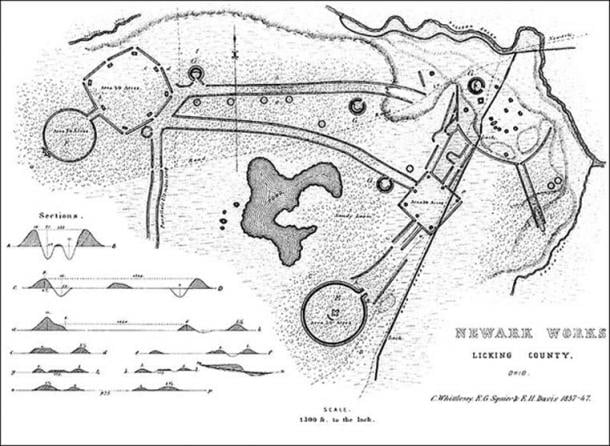
The site where the objects were found is known as The Newark Earthworks, Newark, Ohio, USA. 19th-century plan of the Works ( Public Domain )
The site, a pyramid-shaped mound, 50 feet (15 meters) high and 200 feet (61 meters) wide, had been excavated in the past, in fact over 15,000 wagon-loads of stone had been removed between 1831 and 1832. The material was transported and used to build the Ohio and Erie canal. At the base level the remains of a wooden (oak) trough or coffin (radiocarbon dated Cal AD-70 to Cal AD-230 with a 95 percent probability) with some human remains were still visible.
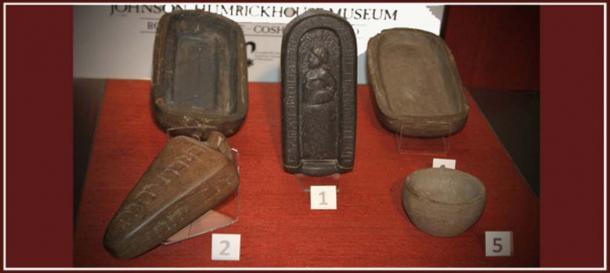
Newark Holy Stones Collection ( Source: JosephKnew.com)
Wyrick decided to dig below and deeper at this site and found a small sandstone box, 18 inches (46 cm) long and 12 inches (30 cm) wide, which was under the wooden object and under a layer of white clay that had not been disturbed. The sandstone case was cemented shut. One of Wyrick’s men found a small whole in the base of the case and blew into it and the case opened. They found a small limestone slab, six and 7/8 inches (17.5 cm) long, one and 5/8 inches (four cm) thick, and two and 7/8 inches (seven cm) wide, perfectly encased in the small, sandstone box.
On one side of the limestone slab was a male human figure with the name Moshe (Moses) in Hebrew carved above it. The figure was dressed in robes and wearing a turban. The rest of the stone was completely covered in Hebrew characters, which were translated as a reproduction of the Ten Commandments, although not complete as we think of them today. Wyrick called the limestone slab ‘The Decalogue Stone’.
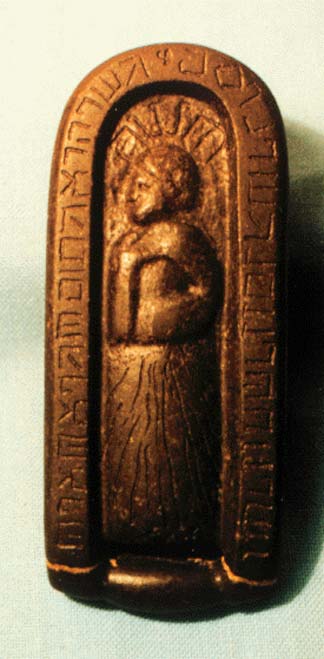
A picture of "The Decalogue", one of several artifacts associated with the Newark Holy Stones. (J. Huston McCulloch/ Public Domain )
The Decalogue Stone and the Ark
I think a better name might be the ‘Ark of the Covenant’, although it is not incased in gold, has only one tablet instead of two, and does not meet the measurements of the Ark, as described in the Bible. However, it does contain a written testimony in ancient Hebrew of the ten commandments, carved in stone, sealed in a box and buried next to an ancient pyramid.
It would have taken a pretty good stone mason to split a piece of sandstone in half, chisel out the inside to hold the exact measurements of the Decalogue stone, carve the male figure on a piece of limestone, then chisel the ten commandments in Hebrew all around the stone, cement it shut, and bury it 12 feet (3.6 meters) deep below a grave site back in 1860. I think if Wyrick and his team were trying to get publicity for some reason they would have come up with better names for the stones.
What Does the Keystone Unlock?
Historians point to the fact that one of Wyrick’s helpers, John Nicol, the local dentist, had been implicated in a hoax concerning two holy stones two years after Wyrick death. Nicol said he planted the stones on Wilson’s Farm east of town to discredit Wyrick’s earlier discoveries. This is one reason why the stones are considered forgeries and everyone questions their authenticity. Wyrick committed suicide in 1864, four years after his discoveries at the age of 56, a broken man.
Two, eight-square plumb bobs were also found with the Decalogue Stone. They are hardly ever mentioned and, at the present time, are lost. Ancient civilizations used plumb bobs to build the pyramids, find true north, south, east, and west, find the winter and summer solstices, as well as the equinox and lunar cycles. I am sure the mound builders used plum bobs in their construction of the mounds.
A plumb bob was the only clue the builders of the Great Pyramid left us inside one of the shafts leading into the Queen’s chamber (found in 1872). All the measurements done at the mounds of Ohio, were also done at Chaco Canyon in southern New Mexico, but over a much greater distance.
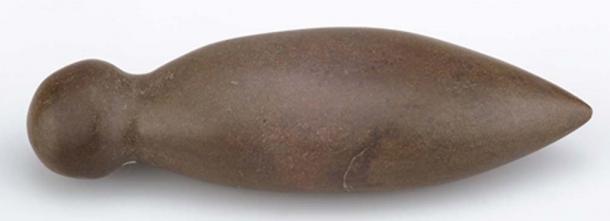
Native American Plumb bob (Lenape, Proto-Munsee), Prehistoric, Harrisburg, PA. ( Source: American Decorative Arts Curator's Fund)
One of Wyrick’s workers found a small sandstone cup the same day that they discovered the Decalogue stone. I know of no other sandstone cup found in a Native American site. Gourds and ceramic ladles, bowls or canteens were used for cups. Again, no record of where it was found was recorded by the group.
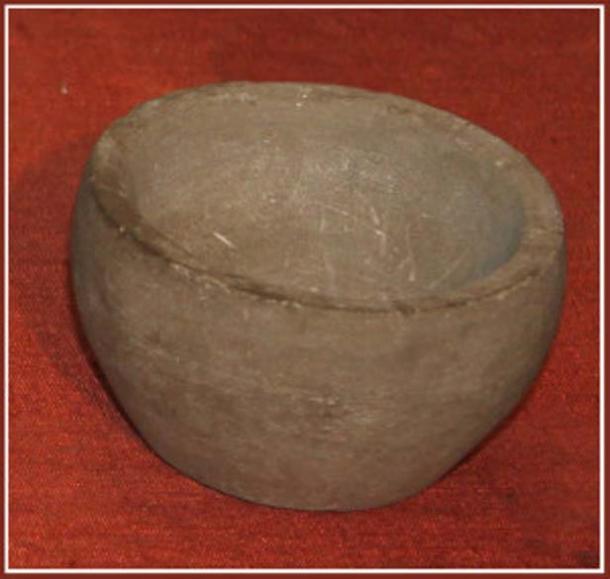
Cup from the Newark Stones Collection ( Source: JosephKnew.com)
Could this be the cup used at the last supper? It’s unknown how to prove this, but if there was some way to find where the people who were buried with the cup came from, we might be able to pinpoint a place of its original origin.
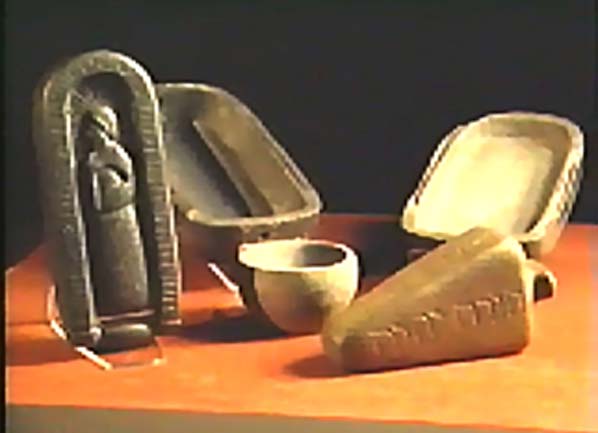
An image of the artifacts in the Newark Stones Collection (‘The Mystery of the Newark Holy Stones/ YouTube.com)
In 2008, Dr. Shlush gathered the DNA from the remains of the Hopewell mound builders near Newark, Ohio. He found a new string of DNA called X2A, which he concluded, was only found in one other location in the world, the Hills of Galilee, in Israel.
Skeptics say that:
There is no credible archaeological or genetic evidence to suggest that any Old World peoples migrated to the Americas after the initial incursion from Siberia prior to the tentative forays of the Norse beginning at around 1000 CE other than limited contacts between Siberia and the American arctic.
-Skeptical Inquirer Volume 36. 1 Jan. 2012
Hopi Creation Story May Shed Light
I believe there is credible evidence: the Hopi Creation Story. Frank Waters lived with the Hopi for three years starting in 1963, working on the Book of the Hopi. He interviewed over 30 Hopi elders and the first thing the elders wanted to tell him was their creation story, where we all came from. I lived with the Hopi for four years in the early ‘70s, seven years later, and I believe the Hopi story can be proven.
The story begins by saying that all four races of man were created equal at the same time (after the ice caps melted and there was a great flood) and the same place, (Egypt). Different guardians taught each race different languages, customs, religions and distributed them around the planet. The Hopi remember crossing a large ocean (the pacific) on small wooden rafts always traveling east and landing on the west side of this continent (Monte Verde, Chile). Their guardian, called Masaw, was waiting for them there and directed them to travel north to their permanent home, where they live to this day. It's believed he also told them that the people coming down from the north, much later across the land bridge, were not to be trusted (the Navajo and Apache?). Five or six other tribes could have come to the Americas from the east at this time across the Atlantic Ocean.
In legend, Masaw knew there would be skeptics in the future. He gave the Hopi a stone tablet to prove that he existed, which gave them title to the land he had provided for them. He broke off one corner of the tablet and took it back across the ocean with him. When the corner of the stone is found and brought back (they wait on the winter solstice each year) it will have to match precisely the tablet they have in their possession. It’s felt there will be no question that their story is true as no one can falsify the missing corner; the inscriptions will have to match. I believe, the corner of the stone has been protected for centuries by guardians, in the sanctuary of the Ark of the Covenant at Axum, for just this reason.
I do not understand why skeptics ignore living, talking, human beings. Perhaps they should concentrate on why the mound builders built mounds? Why the pyramid builders built pyramids? Why did past civilizations worry about earth’s delicate balance in space; watching the moon cycles (our balance), the solstices (the tilt), and the equinox (the perfect balance)? What were the ancient ones trying to tell us about Earth’s balance, and why? The Hopi creation story might hold the clue.
The entire collection is on display at the Johnson-Humrick-House Museum, Coshocton, Ohio , for everyone’s inspection and evaluation.
1 comment:
Awesome !! 😍👍
Post a Comment